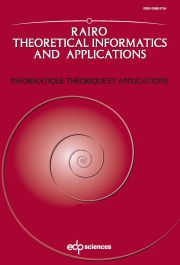Crossref Citations
This article has been cited by the following publications. This list is generated based on data provided by Crossref.
Lin, Lan
Lin, Yixun
and
West, Douglas B.
2014.
Cutwidth of triangular grids.
Discrete Mathematics,
Vol. 331,
Issue. ,
p.
89.
Zhang, Zhen-Kun
Zhao, Zhong
and
Pang, Liu-Yong
2022.
Decomposability of a class of k-cutwidth critical graphs.
Journal of Combinatorial Optimization,
Vol. 43,
Issue. 2,
p.
384.


